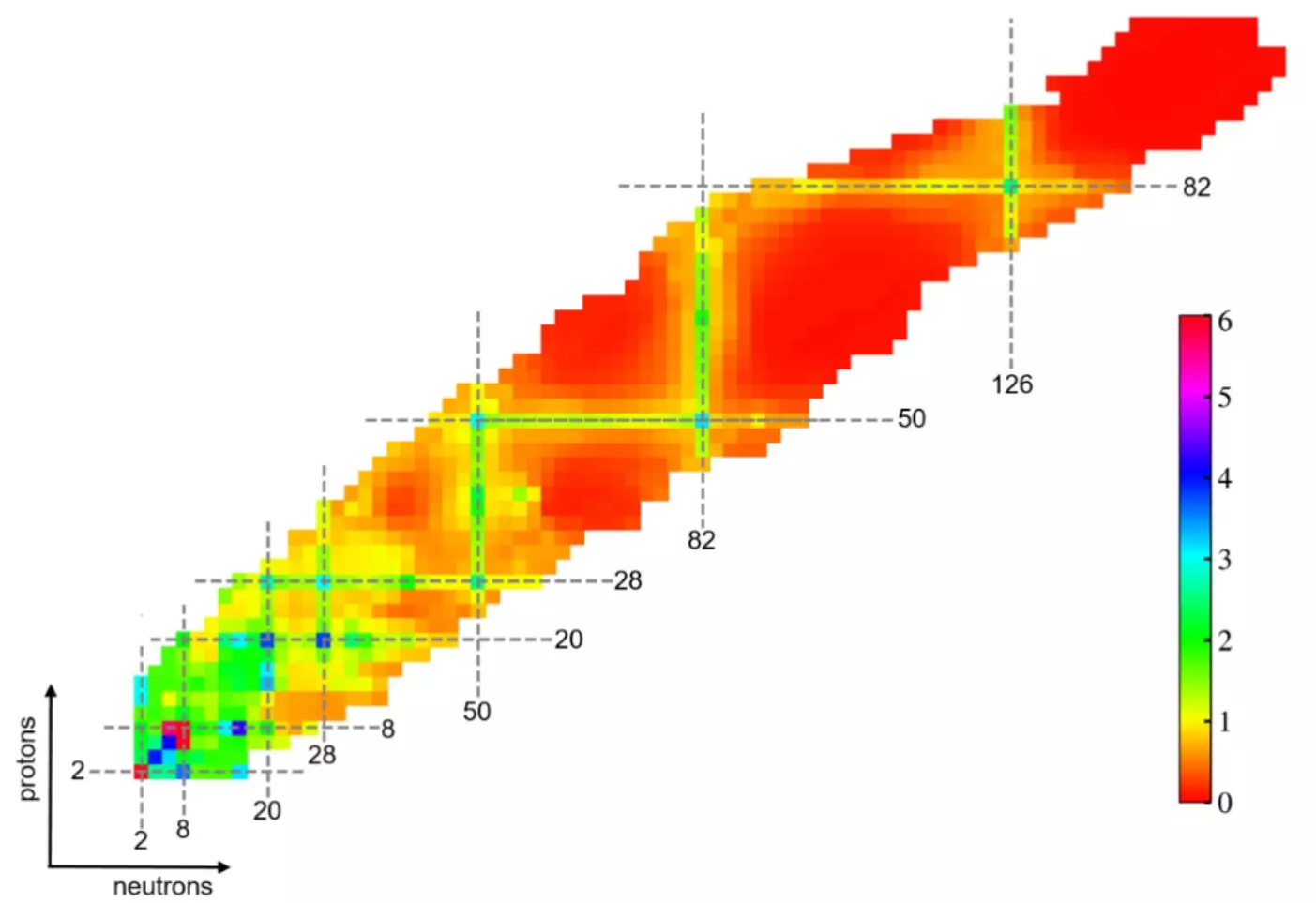Atomic nuclei, the cores of atoms themselves, are composed of protons and neutrons that are held together by the strong nuclear force. An intriguing feature of these nuclei is the concept of magic numbers—specific quantities of protons and neutrons that confer unusual stability. Initially identified in the 1930s, magic numbers such as 2, 8, 20, 28, 50, 82, and 126 stand out because nuclei with these numbers exhibit enhanced stability and resistance to radioactive decay. However, the constancy of these magic numbers has come under scrutiny, particularly for nuclei that venture far from stability. Recent advancements in machine learning have provided a novel lens through which to examine these long-held beliefs.
Recent research spearheaded by a collaborative team from the Institute of Modern Physics (IMP) in China along with Huzhou University and the University of Paris-Saclay has begun to challenge the conventional understanding of magic numbers using cutting-edge machine learning techniques. Machine learning, a domain of artificial intelligence that focuses on the development of algorithms that can learn from and make predictions based on data, is rapidly gaining ground in physics. The study, published in Physics Letters B, emphasizes the profound accuracy that these algorithms can bring to nuclear physics, allowing for a more nuanced understanding of shell structures in atomic nuclei.
One of the striking outcomes of the study is the revelation that the traditional magic number 20, typically associated with stable neutron configurations, appears to vanish in the nucleus of oxygen-28. This challenges previously accepted notions of how stability manifests in atomic nuclei, particularly those that are neutron-rich. The robustness of traditional magic numbers in other nuclei, however, remains intact; for example, the nucleus of tin-100 continues to uphold the integrity of the magic number 50. These contrasting results suggest that while some magic numbers may be essential to the structure of certain nuclei, others may be more flexible, potentially influenced by the surrounding nuclear environment.
The findings of this research are part of a broader endeavor to refine our understanding of nuclear phenomena. As Lyu Bingfeng, an Associate Professor at IMP, notes, discovering whether conventional magic numbers persist in these far-off stable nuclei and identifying any new emerging magic numbers can have significant implications for nuclear physics and the study of exotic isotopes. By offering enhanced predictive powers and deepened insights into low-lying excited states—where atomic nuclei transition between energy levels—machine learning stands to revolutionize the field.
The researchers reported remarkable accuracy in reproducing experimental data regarding the excited states and electromagnetic transition probabilities of even-even nuclei. This exceeds the fidelity of both traditional nuclear models and prior machine learning approaches, showcasing the capability of modern algorithms to analyze complex datasets effectively. Wang Yongjia from Huzhou University, another lead author of the research, emphasized this breakthrough as pivotal for advancing theoretical frameworks and experimental methodologies alike.
Perhaps one of the most significant implications of this research is its potential to inform future experimental work. As researchers gain insights from machine learning analyses, they are poised to make more refined measurements of low-lying excited states and electromagnetic properties in nuclei, particularly at rare-isotope facilities like the High Intensity heavy-ion Accelerator Facility in China. This is particularly critical for the states of rare isotopes where magic numbers may play an irreplaceable role in the properties of these nuclei.
The intersection of machine learning and nuclear physics illuminates a path toward unpacking the complexities of atomic structure. As researchers continue to investigate the fluidity of magic numbers in increasingly exotic nuclei, they foster a deeper understanding of nuclear forces at play, potentially ushering in new physics phenomena. The journey into the heart of atomic matter has only just begun, with machine learning proving to be a valuable ally in this scientific exploration.


Leave a Reply